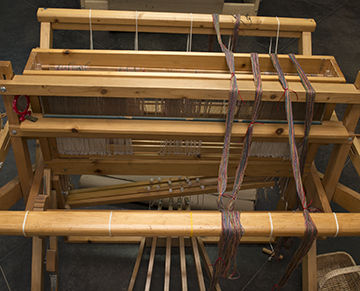Rules
Marcy Petrini
5/16/2016
I like to go with the flow – make up knitting patterns as I work, cook without recipes, travel with vague plans. Even in my weaving I like to design my pieces, leave my weft yarn options open, and sometimes unweave and re-thread or re-sley because I just didn’t like the way the weaving looked.
But I also know that we need rules, in weaving and in life. Imagine someone driving at 65 mph in a small neighborhood street. In weaving, I like to divide my rules into three sets.
The first is the rule that we all use, our language, if you will. When I say that I wove a table runner in huck, you know exactly what I mean – if you know the vocabulary. You may not know the exact threading, but you get an idea of what my runner may look like. And, as shown below, you may even know that you can weave warp and weft floats on both sides of the cloth.

The second class of rules are for the way we do things. As a teacher, I try very hard not to say “always” or “never” or “you must”, because people are different, looms are different and we all have preferences. What may be easy for someone with long arms, won’t work for someone with shorter ones, for example. But whenever I discuss how I do things, I also explain why I do the things the way I do them. For example, I say that I dress my loom from the back to the front to minimize the wear and tear of my warp threads by having them go through the heddles and reed only once. Any mixing of warp ends that I like to do at the loom, I can accomplish by using more than one warp.

The last set has rules that I use for myself, to overcome my poor tendencies, or to make my weaving easier, or to make myself accountable.
The one that I follow most religiously is: “never have a naked loom”. I learned from experience that if I take a project off one of the looms, and then start the planning for the next project, there will be procrastination and the loom will sit “naked” – empty – longer than it needs to be. I am not sure why. I like to weave, I enjoy every step of the process, perhaps some more than others, but still, a loom without a warp is a psychological barrier, and even having a bout laying on top of it is enough to get that next project going.
So, this is what I do: I start winding the warp for the next project while weaving the current piece. If I am delayed and I don’t wind a new warp before the current project is done, I simply don’t take it off until I have a least a bout wound. Then I can take the project off and lay the bout on the loom, which is thus no longer naked.

Here is my loom waiting for more bouts, so the warp can be wound.
What rules do you use?
Please email comments and questions to This email address is being protected from spambots. You need JavaScript enabled to view it..